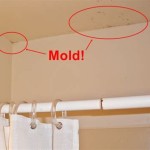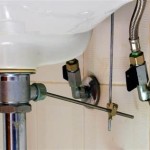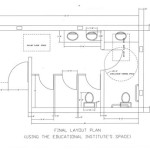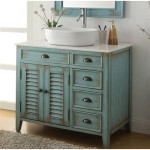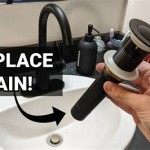Can Bathroom Pipes Smell? A Comprehensive Guide to Identifying and Addressing Odor Issues
Bathroom odors emanating from pipes are a common household concern. Identifying the source and understanding the underlying causes are crucial steps in effectively resolving these unpleasant smells. A variety of factors can contribute to these odors, ranging from simple plumbing issues to more complex drain system problems. This article will explore the common causes of bathroom pipe smells, offering insights into preventative measures and potential solutions.
The Role of the P-Trap in Preventing Sewer Gas
The P-trap is a vital component of any plumbing system designed to prevent sewer gases from entering a building. This U-shaped pipe, located beneath sinks, toilets, and other drains, holds a small amount of water. This water acts as a barrier, effectively sealing the drain opening and preventing noxious gases from rising up into the living space. When the P-trap functions correctly, these sewer gases, which contain methane, hydrogen sulfide, and other potentially harmful compounds, are trapped within the drain system and vented through the plumbing vent stack on the roof.
If the P-trap dries out, the barrier is eliminated, allowing sewer gases to freely enter the bathroom. This can occur in infrequently used bathrooms or during periods of prolonged absence. Evaporation is the primary reason for a dry P-trap. Similarly, a slow leak in the P-trap itself can also lead to water loss, compromising its effectiveness. Identifying a dry or leaking P-trap is often the first step in diagnosing bathroom pipe smells.
To address a dry P-trap, simply running water down the drain for a few minutes will replenish the water seal. For bathrooms that are not used regularly, periodically running water down the drains can prevent the P-trap from drying out. If a leak is suspected, a thorough inspection of the P-trap and its connections is necessary. Leaks can often be repaired by tightening connections or replacing worn-out components.
Biofilm Buildup and Bacterial Activity
Biofilm, a slimy layer composed of microorganisms, can accumulate on the interior surfaces of drain pipes over time. This buildup provides a breeding ground for bacteria, which can break down organic matter and produce foul-smelling gases. Food particles, hair, soap scum, and other debris that enter the drain system contribute to the formation of biofilm. The anaerobic bacteria thriving within this biofilm are particularly prone to producing hydrogen sulfide, a gas with a characteristic rotten egg odor.
The presence of biofilm is often indicated by a persistent, unpleasant odor emanating from the drain, even after flushing with water. The smell may be more noticeable in the morning or after a period of inactivity, as the bacterial activity has had time to intensify. Regular cleaning of the drains can help prevent the buildup of biofilm and reduce the associated odors.
Several methods can be employed to clean drain pipes and remove biofilm. Pouring boiling water down the drain can help loosen and dislodge the biofilm. Baking soda and vinegar, followed by hot water, can also be effective in breaking down organic matter and neutralizing odors. For more stubborn biofilm buildup, enzymatic drain cleaners can be used to digest the organic material. These cleaners contain beneficial bacteria that break down the biofilm without harming the pipes.
Vent Stack Issues and Improper Ventilation
The plumbing vent stack is a crucial component of the drain system responsible for maintaining proper air pressure within the pipes. This vertical pipe extends from the drain system to the roof, allowing air to enter the pipes as water flows out. This prevents a vacuum from forming, which can siphon water from the P-traps and disrupt the sewer gas barrier. The vent stack also allows sewer gases to escape safely into the atmosphere, rather than accumulating within the building.
A blocked or obstructed vent stack can disrupt the entire drain system and lead to unpleasant odors in the bathroom. Obstructions can include leaves, bird nests, snow, or even construction debris. When the vent stack is blocked, the air pressure within the drain system becomes unbalanced, potentially siphoning water from the P-traps and allowing sewer gases to enter the building.
Signs of a blocked vent stack can include gurgling sounds coming from the drains, slow draining, and a persistent sewer gas smell in the bathroom. Identifying and clearing the obstruction is essential to restoring proper ventilation to the drain system. This may involve inspecting the vent stack from the roof and using a plumber's snake or other tool to remove the blockage. In some cases, professional plumbing assistance may be required to address particularly stubborn obstructions or to repair damage to the vent stack.
Other Potential Causes of Bathroom Pipe Smells
While the P-trap, biofilm buildup, and vent stack issues are among the most common causes of bathroom pipe smells, other factors can also contribute to the problem. These include:
Clogged Drains: A partially clogged drain can trap organic matter and debris, creating a breeding ground for odor-producing bacteria. Even if the P-trap is functioning correctly, the stagnant water and accumulated debris within the clog can emit foul odors. Regular drain cleaning can help prevent clogs and the associated smells.
Sewer Line Problems: In some cases, the source of the odor may not be within the bathroom itself, but rather in the main sewer line. Cracks, leaks, or blockages in the sewer line can allow sewer gases to escape and permeate into the building. These problems typically require professional plumbing assistance to diagnose and repair.
Wax Ring Failure: The wax ring seals the base of the toilet to the drain pipe, preventing sewer gases from escaping. Over time, the wax ring can deteriorate or become damaged, allowing gases to leak into the bathroom. Replacing the wax ring is a relatively straightforward repair that can often eliminate toilet-related odors.
Plumbing Leaks: A hidden plumbing leak, even a small one, can create a damp environment that promotes mold and mildew growth. The resulting musty or moldy smell can be mistaken for a pipe smell, although the source is actually the mold and mildew growing in the damp area.
Garbage Disposal Odors: While primarily associated with kitchen sinks, garbage disposals can sometimes contribute to bathroom odors if the drain lines are connected. Food particles and debris trapped within the disposal can decompose and produce foul smells. Regularly cleaning the garbage disposal with ice and citrus peels can help prevent odors.
Septic System Issues: For homes with septic systems, odors in the bathroom can sometimes indicate a problem with the septic tank or leach field. Overloading the system, improper maintenance, or damage to the tank can all lead to septic odors entering the building. Professional septic system inspection and maintenance are crucial for preventing these issues.
Addressing bathroom pipe smells requires a systematic approach, starting with identifying the source of the odor. By understanding the common causes and implementing appropriate preventative measures and solutions, homeowners can effectively eliminate these unpleasant smells and maintain a clean and fresh bathroom environment.

Why Does My Toilet Smell Like Sewage 5 Causes Solutions

Sewer Smell In Bathroom Identify And Eliminate The Odor

Sewer Smell In Bathroom Solved Bob Vila

My Bathroom Smells Like A Sewer What Causes That And How Do You Fix It Kitchen Infinity
What To Do When You Notice A Sewer Smell In Bathroom Spaces Howstuffworks

7 Causes Of A Sewer Smell In The Bathroom Hays

What Causes Bathroom Drains To Smell

Five Reasons Your Bathroom Smells Like A Sewer The Plumbette
My Bathroom Smells Bad But Only When Its Hot Outside It Also Will Slightly Go Away I Run The Sink And Toilet Bathtub Any Thoughts On What Is

Why Does Bathroom Smell Like Sewage Crystal Blue
Related Posts

